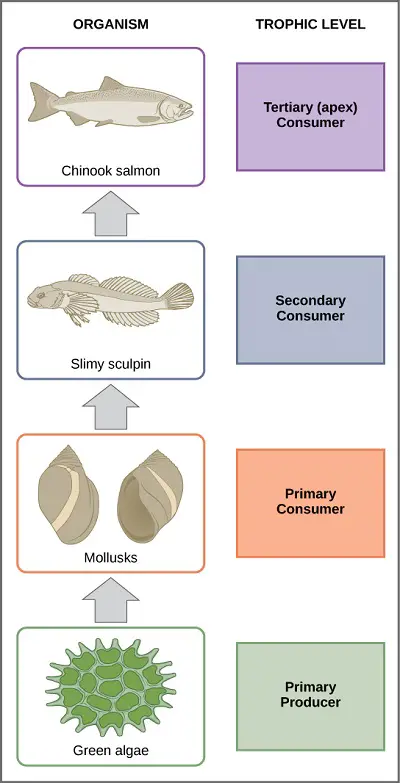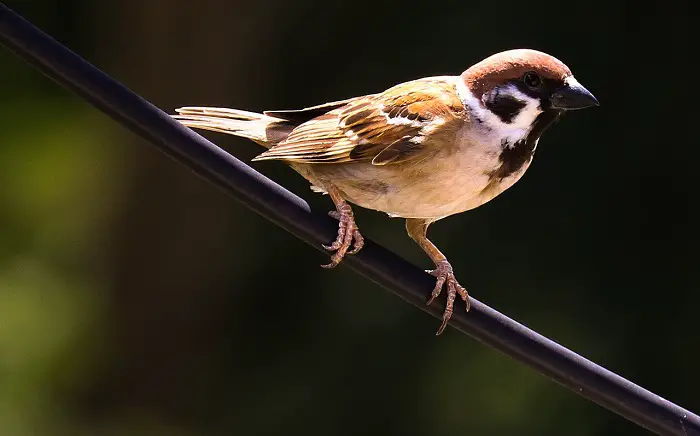Community Structure and Dynamics
Biological communities are made from different populations of different species living close enough together for an interaction to form. Ecologists define the boundaries of the community depending on how they want it to be investigated. The structure of a community can be described by its species composition, the number of species, and their relative abundance. As such, the focus of a community ecologist is the interaction among species.
Table of Contents
- Interspecific Interactions and Community Structure
- Ecological Niche Theory and Trophic Structure
- Species Diversity and the Keystone Species Concept
- Download Article in PDF Format.
- Test Yourself!
Interspecific Interactions and Community Structure
Members of a community engage in interspecific interactions where they interact with individuals from a different species. This also affects population structure and dynamics. Some of the interspecific interactions are classified according to their effect on the populations concerned, which may be harmful or helpful. In the following table, a “+” symbol is helpful for one species while a “-” symbol hurts the other:
| Interaction | Effect on Species 1 | Effect on Species 2 |
| Competition | – | – |
| Mutualism | + | + |
| Predation | + | – |
| Herbivory | + | – |
| Parasitism | + | – |
Interspecific competition occurs when populations of two or more different species compete for the same, limited resources. You might argue that a species may win over some of its competitors but in general, the effect of this type of competition is negative for both populations.
In mutualism, both populations benefit. For example, the relationship between plants and their pollinators is mutual. Predation, herbivory, and parasitism are just a few types of interaction that lead to one species exploiting the other.
Ecological Niche Theory and Trophic Structure
Each species in a community has an ecological niche. This is the sum of its use of biotic and abiotic resources in the environment. That is to say, they fill and play a role in the environment they live in and everything it needs to continue existing. The previously mentioned types of interactions shape the niche of an organism and influence the communities’ trophic structure.

The trophic structure is a pattern of feeding relationships consisting of several different levels. The sequence of food transfer up each trophic level is known as a food chain. Starting at the bottom, the trophic level supports all others and consists of the autotrophs which ecologists call producers. Plants are the main producers on land while phytoplanktons are the main producers in the water.
All organisms in trophic levels above the producers are heterotrophs and their consumption depends on the output of producers. Herbivores are primary consumers. The trophic levels above them are made up of carnivores and insectivores and the trophic level could extend as long as one is consumed by another (secondary up to quaternary consumers are also observed in some food chains). Food chains are interconnected in nature, forming a food web.
There is another trophic level where the consumers derive their energy from detritus and they consume it at different stages of decay. Scavengers feast on carcasses left behind by predators; detritivores feed on decaying organic material; while decomposers digest the organic molecules into their inorganic forms. The breakdown of organic material into inorganic ones is decomposition and it allows decomposers to recycle the nutrients, linking all trophic levels in the process.
In the next topic, we will highlight the importance of species and a mechanism by which an ecosystem restores or rehabilitates itself.
Species Diversity and the Keystone Species Concept
A community has species diversity which is defined by two components: species richness and relative abundance. Species richness is the number of different species in a community while relative abundance is the proportion of each species in the community. The species diversity of plants often affects the species diversity of animals in the community.
Species diversity also has consequences for pathogens since most can only infect certain hosts or target species. Low species diversity is visible in many modern agricultural ecosystems since most crops are planted in monoculture, that is a single species is grown over a wide area. This is why agricultural fields can get devastated potentially when their plants get infected by pathogens.

Different species can impact the community at varying magnitudes, paving the way for communities with different species diversity. This introduces the concept of keystone species. These are species whose impact on their community is much larger than its abundance or biological mass would indicate.
A keystone species fills a niche that holds the rest of its community in place, like its namesake which is the wedge-shaped stone at the top of an arch that locks other pieces in place. And so, if this species is removed, the community dynamics collapses. The keystone species concept has practical applications in restoring or rehabilitating damaged ecosystems.

Communities have an established dynamic in natural systems. Introducing foreign species into the area alters this dynamic and often upsets the “balance” established in the community. These invasive species when introduced into an area can become destructive when they dominate over the native species wherever they find a suitable habitat.
Community ecology offers some insights in explaining why some non-native species become pests and is mainly because of interspecific interactions between the native and non-native species.
Next topic: Ecological Succession
Previous topic: Concepts of Population Ecology
Return to the main article: The Principles of Ecology
Download Article in PDF Format.
Test Yourself!
1. Practice Questions [PDF Download]
2. Answer Key [PDF Download]
Copyright Notice
All materials contained on this site are protected by the Republic of the Philippines copyright law and may not be reproduced, distributed, transmitted, displayed, published, or broadcast without the prior written permission of filipiknow.net or in the case of third party materials, the owner of that content. You may not alter or remove any trademark, copyright, or other notice from copies of the content. Be warned that we have already reported and helped terminate several websites and YouTube channels for blatantly stealing our content. If you wish to use filipiknow.net content for commercial purposes, such as for content syndication, etc., please contact us at legal(at)filipiknow(dot)net